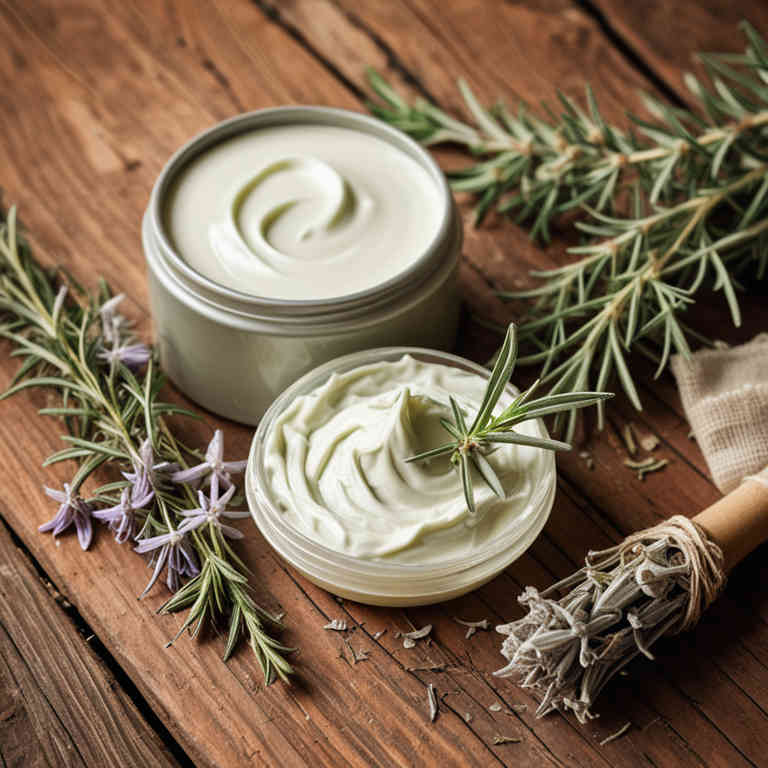Rosmarinus officinalis cream for medicinal use

Rosmarinus officinalis cream is a topical preparation made from rosemary, a herb known for its aromatic and therapeutic properties.
It is typically infused with rosemary oil and a base of beeswax or other natural emollients to create a soothing, easily absorbed cream. In herbalism, this cream is used to support circulation, reduce inflammation, and alleviate muscle aches and joint pain. It is also believed to have antioxidant properties that may help protect skin health.
This preparation is commonly applied to the scalp to stimulate hair growth and improve scalp conditions.
Uses
Rosmarinus officinalis cream has been used to treat various skin conditions and promote overall wellness for centuries.
Historically, it was valued in ancient Roman and Greek cultures for its antiseptic and healing properties, often applied to wounds and skin infections. Traditionally, it was also used in aromatherapy and as a remedy for respiratory issues, with its essential oils believed to enhance mental clarity and memory. In modern times, the cream is widely used for its anti-inflammatory and antioxidant benefits, helping to soothe irritated skin and improve skin texture.
It is also popular in natural skincare routines for its refreshing scent and therapeutic effects.
Benefits
Rosmarinus officinalis cream has health benefits such as promoting skin healing, reducing inflammation, and providing antioxidant protection.
This cream is made from rosemary, a herb known for its potent essential oils and phytochemicals. It can help soothe skin conditions like eczema and psoriasis due to its anti-inflammatory properties. The antioxidants in rosemary may also help protect the skin from environmental stressors and premature aging.
Additionally, it may enhance circulation and reduce the appearance of scars when applied topically.
Constituents
Rosmarinus officinalis cream active constituents include essential oils, flavonoids, phenolic acids, and rosmarinic acid.
These compounds contribute to the cream's anti-inflammatory, antioxidant, and antimicrobial properties. Rosmarinic acid is particularly noted for its ability to neutralize free radicals and reduce oxidative stress. The essential oils, such as cineole and camphor, provide a soothing effect on the skin.
This herbal preparation is often used topically to support skin health, reduce inflammation, and promote wound healing.
Preparation
To make Rosmarinus officinalis cream, you will need fresh rosemary leaves, a base of either coconut oil or shea butter, and optionally beeswax for consistency.
Start by washing and drying the rosemary leaves, then finely chop them. In a double boiler, melt the coconut oil or shea butter and add the chopped rosemary, allowing it to infuse for 30 minutes. Strain the mixture to remove the plant material, then add beeswax if desired and blend until smooth.
Store the cream in a cool, dark place or refrigerate for longer shelf life.
Side Effects
Rosmarinus officinalis cream may lead to skin irritation or allergic reactions in some individuals due to the presence of essential oils and other active compounds.
It is generally considered safe for topical use when applied as directed, but excessive use or prolonged contact may cause dryness or sensitivity. Some people may experience redness, itching, or a burning sensation, especially if they have sensitive skin or a known allergy to plants in the Lamiaceae family. In rare cases, it may interact with other topical medications or exacerbate existing skin conditions.
It is advisable to perform a patch test before using the cream regularly to assess individual tolerance.